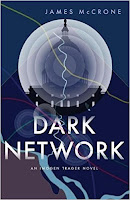“Five Came Back” by Mark Harris – Molding Life Through Fiction
It is no secret that movies have a bearing on us as a society; they not only entertain us and serve as a widely-beloved discussion subject, but also help to instill various ideas and values into society.
The people we see on the silver screen are often paragons of perfection, ideals that go above and beyond what is possible for one person in the real world.
Though some may argue that this sets unrealistic standards for us, I would say that there are times when such inspiration is needed, as it was during the Second World War.
In Five Came Back, Mark Harris looks into the lives of John Ford, William Wyler, John Huston, Frank Capra and George Stevens, five Hollywood directors who became involved rather deeply, at least to a certain extent, in the war’s efforts. The book explores not only the impact the war had on the direction Hollywood would take, but also discusses the idea of Hollywood bearing a certain influence on the ultimate outcome of the war.
When I opened up this book I had a very vague idea as to who these directors were, what they had put themselves through, and the importance they managed to have in peoples’ lives.
By the end of it, I felt like I had come to know each and every one of them with great intimacy, being privy to not only their thoughts and life facts, but also their motivations, values and morals as human beings… and let me tell you, these people certainly don’t lack in greatness to discuss.
When it comes to the narrative and the story itself, I was expecting something more dry and factual, something for those already familiar with and interested in the subject.
However, I was rather pleasantly surprised as Harris managed to weave together and enthralling and compelling story, one that despite being entertaining is still based on accurate and well-researched information.
Though there certainly is a healthy amount of gossip and personal information, what takes the center stage are the movies made by these men while being volunteers for the U.S. Army.
Though they were tasked with making propaganda (understandably), these men put their talent to use and churned out some rather unusual and interesting movies, ones that helped to shape the thoughts of America’s future generations.
All in all, if you are interested in the subject of how art contributes to society’s development, how the world of cinematography and the Second World War collided in unexpected ways, or are just looking to learn about the war from a different perspective, I wholeheartedly recommend you check this book out.
The people we see on the silver screen are often paragons of perfection, ideals that go above and beyond what is possible for one person in the real world.
Though some may argue that this sets unrealistic standards for us, I would say that there are times when such inspiration is needed, as it was during the Second World War.
In Five Came Back, Mark Harris looks into the lives of John Ford, William Wyler, John Huston, Frank Capra and George Stevens, five Hollywood directors who became involved rather deeply, at least to a certain extent, in the war’s efforts. The book explores not only the impact the war had on the direction Hollywood would take, but also discusses the idea of Hollywood bearing a certain influence on the ultimate outcome of the war.
When I opened up this book I had a very vague idea as to who these directors were, what they had put themselves through, and the importance they managed to have in peoples’ lives.
|
|
|
|
|
By the end of it, I felt like I had come to know each and every one of them with great intimacy, being privy to not only their thoughts and life facts, but also their motivations, values and morals as human beings… and let me tell you, these people certainly don’t lack in greatness to discuss.
When it comes to the narrative and the story itself, I was expecting something more dry and factual, something for those already familiar with and interested in the subject.
However, I was rather pleasantly surprised as Harris managed to weave together and enthralling and compelling story, one that despite being entertaining is still based on accurate and well-researched information.
Though there certainly is a healthy amount of gossip and personal information, what takes the center stage are the movies made by these men while being volunteers for the U.S. Army.
Though they were tasked with making propaganda (understandably), these men put their talent to use and churned out some rather unusual and interesting movies, ones that helped to shape the thoughts of America’s future generations.
All in all, if you are interested in the subject of how art contributes to society’s development, how the world of cinematography and the Second World War collided in unexpected ways, or are just looking to learn about the war from a different perspective, I wholeheartedly recommend you check this book out.
 | Mark HarrisMark Harris is an American writer and journalist whose best-known work is without a doubt Pictures at a Revolution, though it ought to be mentioned that he writes and/or has written for Entertainment Weekly and New York Times, just to give you an idea of how highly-regarded he is. |













Comments
Post a Comment